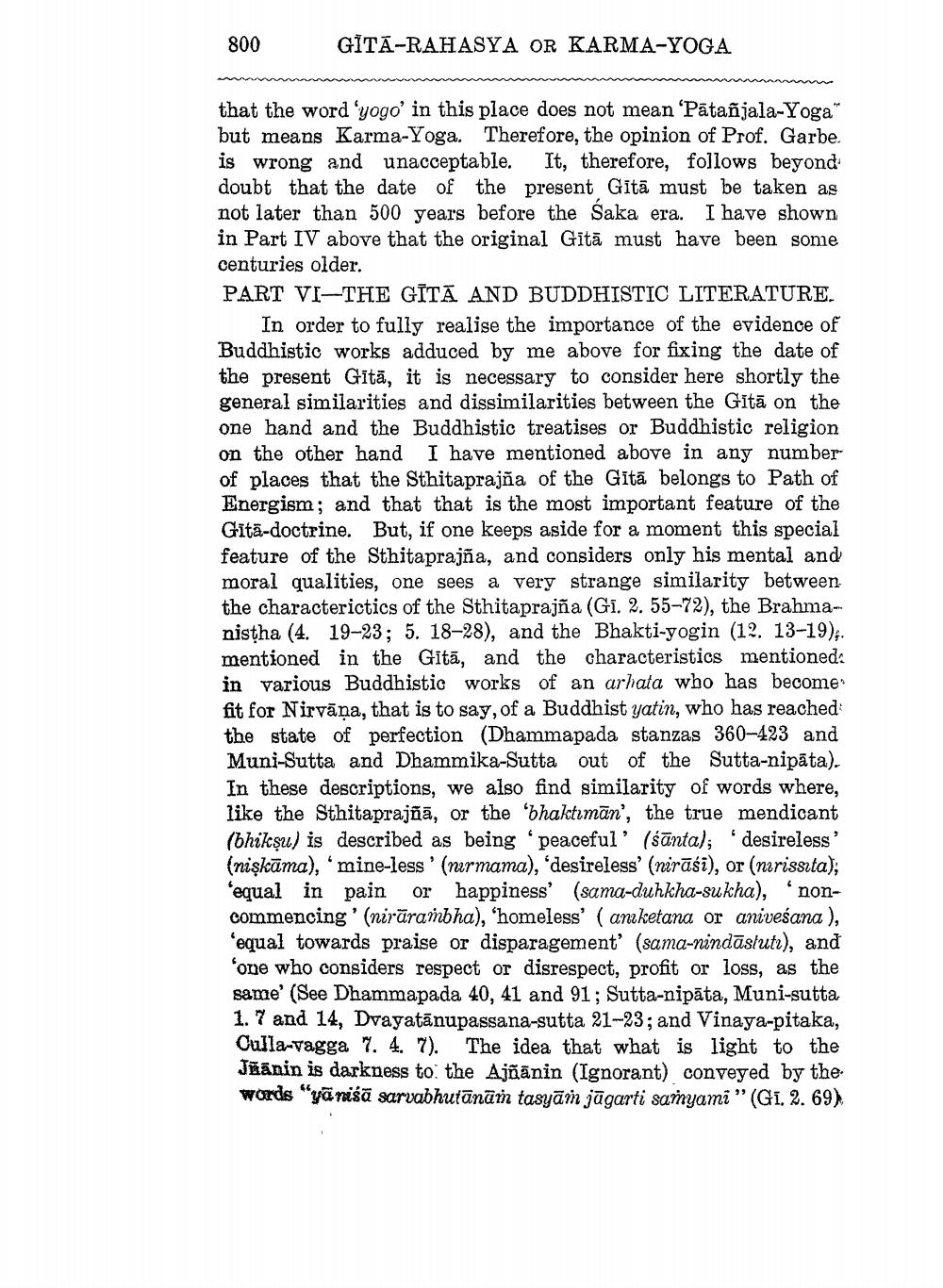________________
800
GITA-RAHASYA OR KARMA-YOGA
that the word 'yogo' in this place does not mean 'Pātañjala-Yoga“ but means Karma-Yoga. Therefore, the opinion of Prof. Garbe. is wrong and unacceptable. It, therefore, follows beyond doubt that the date of the present Gītā must be taken as not later than 500 years before the Saka era. I have shown in Part IV above that the original Gītā must have been some centuries older. PART VI-THE GITA AND BUDDHISTIC LITERATURE.
In order to fully realise the importance of the evidence of Buddhistic works adduced by me above for fixing the date of the present Gitā, it is necessary to consider here shortly the general similarities and dissimilarities between the Gītā on the one hand and the Buddhistic treatises or Buddhistic religion on the other hand I have mentioned above in any number of places that the Sthitaprajña of the Gītā belongs to Path of Energism; and that that is the most important feature of the Gita-doctrine. But, if one keeps aside for a moment this special feature of the Sthitaprajña, and considers only his mental and moral qualities, one sees a very strange similarity between the characterictics of the Sthitaprajña (Gi. 2. 55-72), the Brahmanistha (4. 19-23; 5. 18-28), and the Bhakti-yogin (12. 13-19) mentioned in the Gītā, and the characteristics mentioned. in various Buddhistic works of an arhata who has become fit for Nirvāna, that is to say, of a Buddhist yatin, who has reached the state of perfection (Dhammapada stanzas 360-423 and Muni-Sutta and Dhammika-Sutta out of the Sutta-nipāta). In these descriptions, we also find similarity of words where, like the Sthitaprajñā, or the bhaktımān', the true mendicant (bhikṣu) is described as being peaceful' (śānta); 'desireless' (niskāma), 'mine-less' (nurmama), 'desireless' (nirāśi), or (nurissita); equal in pain or happiness' (sama-duhkha-sukha), 'noncommencing' (nirärambha), 'homeless' (anketana or aniveśana), equal towards praise or disparagement' (sama-nindāsluti), and 'one who considers respect or disrespect, profit or loss, as the same' (See Dhammapada 40, 41 and 91 ; Sutta-nipāta, Muni-sutta 1.7 and 14, Dvayatānupassana-sutta 21-23; and Vinaya-pitaka, Culla-vagga . 4. 7). The idea that what is light to the Jõänin is darkness to the Ajñānin (Ignorant) conveyed by the words "yä nisä sarvabhutānañ tasyām jūgarti samyami” (GI. 2. 69)




